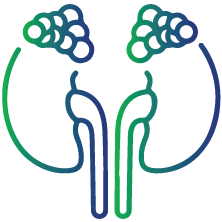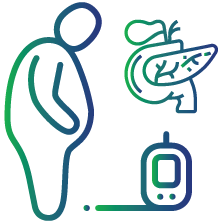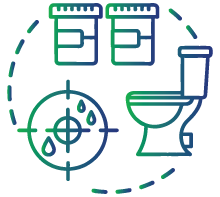
Antinuclear antibody (ANA) IFA, in dilutions Test
Antinuclear antibody (ANA) IFA, in dilutions Test
The “ANA - IFA test” is a diagnostic test that detects the pattern and titres (levels) of antinuclear antibodies in your blood by using an indirect fluorescent antibody method (IFA). Anti-nuclear antibodies are antibodies (proteins) that react with components of the body’s normal tissues and organs. The ANA test helps in detecting and diagnosing certain forms of autoimmune diseases. Thus, getting your ANA test done is recommended to prevent various immune-mediated complications.
ANA test is also knowns as ANA, Antinuclear antibody panel, fluorescent antinuclear antibody, FANA, and ANA reflexive panel
What is an ANA test used for?
ANA test is used to diagnose autoimmune diseases like:

Systemic lupus erythematosus (SLE)

Rheumatoid arthritis (Joints)

Scleroderma (Skin)

Sjogren's syndrome (Glands

Addison Disease (Adrenal gland)

Autoimmune hepatitis (Liver)

Psoriasis (Skin)

Type 1 diabetes

Thyroid diseases (Autoimmune)
Who should get tested?
An ANA test is recommended to be performed on a regular basis for individuals who have symptoms of an autoimmune disease. The symptoms vary depending on the affected body part. The common symptoms include:

Fever

Fatigue

Weight loss

Muscle or joint aches

Rashes

Recurrent sores

Hearing loss

Vision loss

Blood in urine

Abdominal pain
Test Preparation
No special preparation is required for the ANA test. Make sure your doctor is aware of all the medications you are taking, as several medications, such as thiazide diuretics, procainamide, and birth control pills, affect the outcome of this
Interpretation of the results (in-dilutions)
Antinuclear (or anti-cytoplasmic) antibodies bind to fixed cells on a slide in the antinuclear antibody (ANA) test. With a fluorescence microscope, the addition of a secondary antibody may reveal staining of the cytoplasm or nucleus. After being diluted 1:40 and 1:160 in a buffered solution, patient samples are frequently checked for ANA. The ANA "titer" refers to the degree of dilution at which a patient's sample can still show detectable staining.
The result of the ANA test is available based on the level or titer and pattern of ANA antibodies in the given sample.
· The most common ratios used to report titers are 1:40, 1:80, 1:160, 1:320, and 1:640. Some labs, but not all, will classify a titre greater than 1:160 as positive.
· Patterns are available as homogenous, speckled, centromere, and other patterns.
· The blood's ANA concentration is measured by the ANA titer; the higher the titer, the higher the sample's autoantibodies.
The titre ratio 1:10 - 1:40 column is interpreted as meaning that only 32% of individuals have a positive test for ANA.
The result may come as positive or negative.
Negative result
If your test results were negative, it indicates the absence of antinuclear antibodies in your blood. It means that you are less likely to have an autoimmune disease.
Positive result
If your test results were positive, it indicates the presence of antinuclear antibodies in your blood. It means that you are more likely to have an autoimmune disease.
A positive ANA result does not necessarily mean the presence of an autoimmune disease. Some people with normal health may test positive for ANAs. A positive outcome may also be linked to specific malignancies, drug usage, viral infections, and other medical disorders. If the test is positive, your doctor could recommend more testing, especially if you continue to have the symptoms of an autoimmune condition.
FAQs
What is the significance of ANA testing?
An ANA test is performed to identify, quantify, and assess the presence of ANA in your blood sample. ANA testing can help doctors diagnose autoimmune diseases and give them information that might help them identify the type of autoimmune disease you have
How is ANA test performed?
Your healthcare provider will use a tiny needle to take blood from a vein in your arm. After the needle is placed, a small amount of blood will be collected in a test tube or vial. When the needle enters or exits, you may experience a slight sting. This procedure usually takes less than a few minutes
What are the risks associated with the ANA test?
A blood test carries a negligible risk. The area where the blood was drawn may cause you a little discomfort or a bruise. But any discomfort or bruises should disappear fast
Should I be worried about positive ANA test results?
Although an autoimmune disorder may be indicated by a positive ANA test, this is not always the case. To decide what to do next, you should consult your doctor
How long should I wait for the ANA test results?
It can take a while to get the test results. Results may be available within a few working days, and once additional tests are finished, doctors may evaluate the ANA testing results with you. When test results are available, they can be communicated via phone, mail, or electronic means

